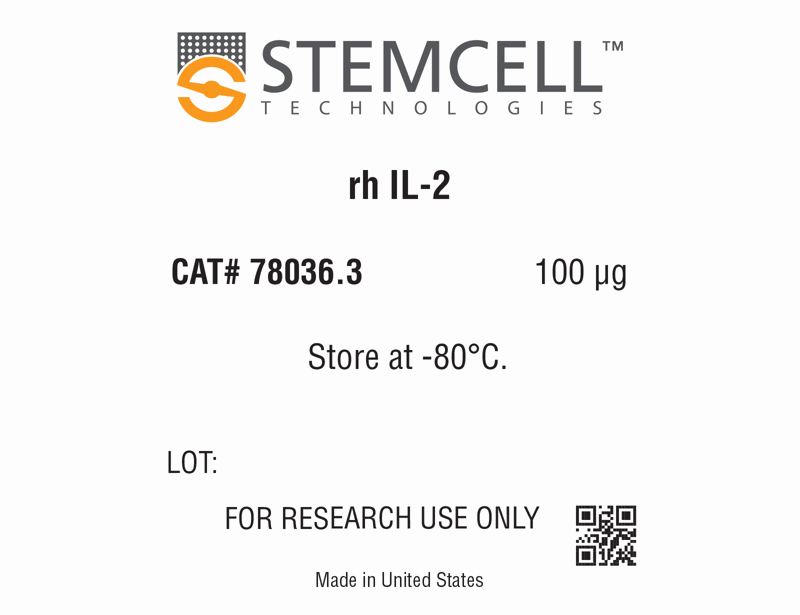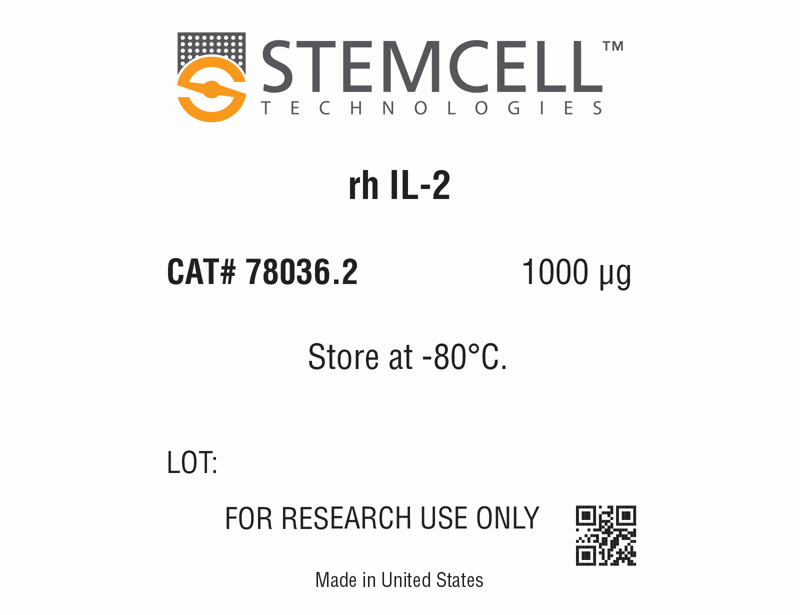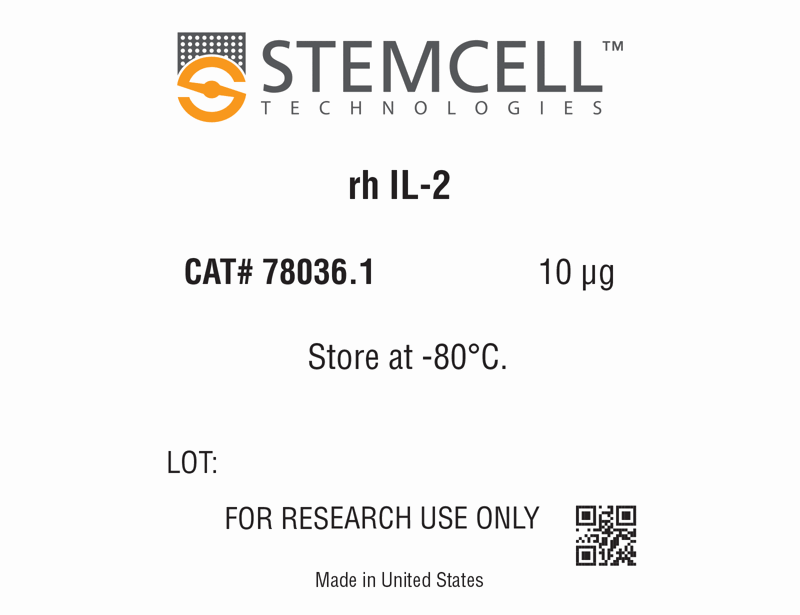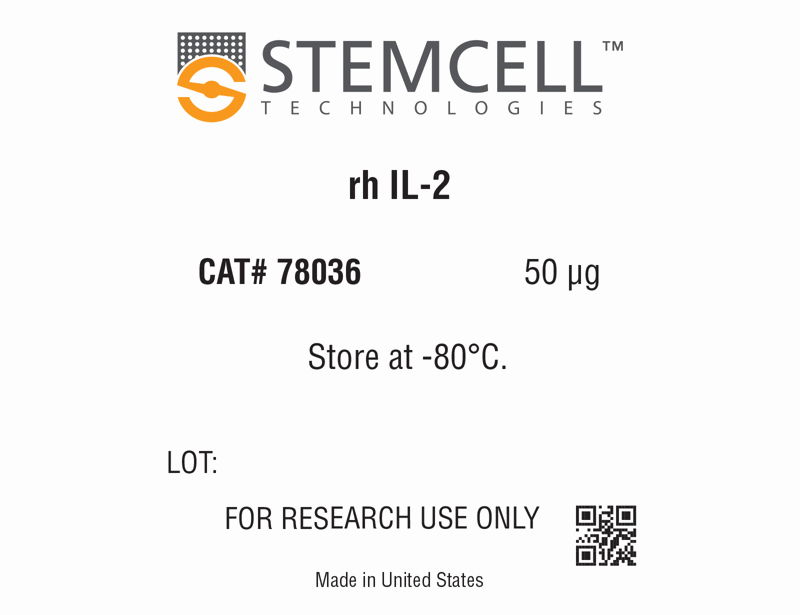概要
Interleukin 2 (IL-2) is a monomeric cytokine that was originally identified as a T cell growth factor (Gaffen & Liu). It binds to heterotrimeric receptors consisting of CD25, CD122, and CD132. Upon binding, it activates JAK3-, STAT5-, and AKT-dependent signaling pathways, which results in cellular proliferation and survival (Ma et al.). The majority of IL-2 is secreted by activated CD4+ and CD8+ T cells, although B cells and dendritic cells were found to produce IL-2 in small amounts. IL-2 downregulates immune responses to prevent autoimmunity during thymic development, influences the development of CD4+CD25+ regulatory T cells, and affects development of follicular helper T cells. IL-2 also controls inflammation by inhibiting Th17 differentiation (Banchereau et al.). High IL-2 levels in serum are associated with progression of scleroderma, rheumatoid arthritis, and gastric and non-small cell lung cancer, though no known disease can be directly attributed to the lack or excess of IL-2 (Gaffen & Liu). Human Recombinant IL-2 has a serine substitute for cysteine at position 126.
数据及文献
Publications (1)
Nature medicine 2018 OCT
Translational control of tumor immune escape via the eIF4F-STAT1-PD-L1 axis in melanoma.
M. Cerezo et al.
Abstract
Preventing the immune escape of tumor cells by blocking inhibitory checkpoints, such as the interaction between programmed death ligand-1 (PD-L1) and programmed death-1 (PD-1) receptor, is a powerful anticancer approach. However, many patients do not respond to checkpoint blockade. Tumor PD-L1 expression is a potential efficacy biomarker, but the complex mechanisms underlying its regulation are not completely understood. Here, we show that the eukaryotic translation initiation complex, eIF4F, which binds the 5' cap of mRNAs, regulates the surface expression of interferon-$\gamma$-induced PD-L1 on cancer cells by regulating translation of the mRNA encoding the signal transducer and activator of transcription 1 (STAT1) transcription factor. eIF4F complex formation correlates with response to immunotherapy in human melanoma. Pharmacological inhibition of eIF4A, the RNA helicase component of eIF4F, elicits powerful antitumor immune-mediated effects via PD-L1 downregulation. Thus, eIF4A inhibitors, in development as anticancer drugs, may also act as cancer immunotherapies.
View All Publications
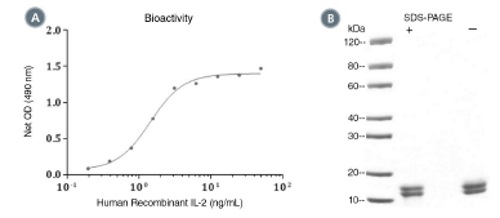

 网站首页
网站首页
